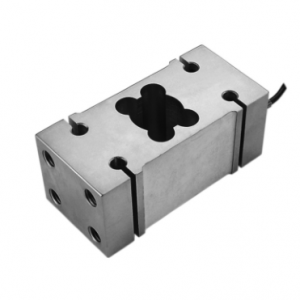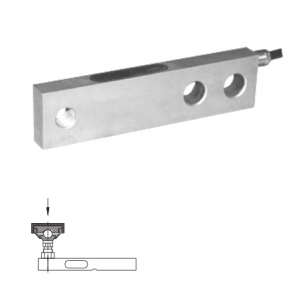எலக்ட்ரானிக் பிளாட்ஃபார்ம் செதில்களுக்கு பொதுவாக பயன்படுத்த வேண்டும்ஏற்ற செல்கள். சோதனையின் துல்லியத்தை உறுதி செய்வதற்காக,யாண்டாய் ஜியாஜியா கருவி கவனம் தேவைப்படும் பல சிக்கல்களை அறிமுகப்படுத்துகிறது:
1. திஏற்ற செல்கள் வெல்டிங் மின்னோட்டம் அல்லது மின்னல் தாக்குதல்களால் ஏற்படும் ஆபத்துக்களில் இருந்து அவற்றைப் பாதுகாக்க மின் பைபாஸை உருவாக்க முறுக்கப்பட்ட செப்பு கம்பிகளை (சுமார் 50 மிமீ 2 குறுக்கு வெட்டு பகுதியுடன்) பயன்படுத்த வேண்டும். பயன்பாட்டில்ஏற்ற செல், வலுவான வெப்பக் கதிர்வீச்சு தவிர்க்கப்பட வேண்டும், குறிப்பாக ஒரு பக்கத்தில் வலுவான வெப்பக் கதிர்வீச்சு.
2. கவனமாக கையாளவும், குறிப்பாக சிறிய திறன்ஏற்ற செல் அலாய் அலுமினியத்தால் செய்யப்பட்ட மீள் உடலால் ஆனது. எந்தவொரு தாக்கமும் அல்லது வீழ்ச்சியும் அதன் அளவீட்டு செயல்திறனுக்கு பெரும் சேதத்தை ஏற்படுத்தலாம். பெரிய திறன் கொண்ட சுமை செல்களுக்கு, பொதுவாக, இது ஒரு பெரிய சுய-எடையைக் கொண்டுள்ளது, எனவே கையாளுதல் மற்றும் நிறுவலின் போது முடிந்தவரை பொருத்தமான தூக்கும் உபகரணங்களை (சங்கிலி ஏற்றுதல்கள், மின்சார ஏற்றிகள் போன்றவை) பயன்படுத்த வேண்டும். அடித்தளத்தின் பெருகிவரும் மேற்பரப்புஏற்ற செல் நிறுவப்பட்டது எண்ணெய் படலம் அல்லது பிசின் படம் இல்லாமல் தட்டையாகவும் சுத்தமாகவும் இருக்க வேண்டும். பெருகிவரும் தளம் போதுமான வலிமை மற்றும் விறைப்புத்தன்மையைக் கொண்டிருக்க வேண்டும், பொதுவாக அதை விட அதிகமாக இருக்கும்ஏற்ற செல் தன்னை.
3. டிஸ்பிளே சர்க்யூட்டுக்கு அல்லது வெளியே செல்லும் அனைத்து கம்பிகளும் கவச கேபிள்களைப் பயன்படுத்த வேண்டும். கவச கம்பியின் இணைப்பு மற்றும் அடித்தளம் நியாயமானதாக இருக்க வேண்டும். இது இயந்திர சட்டத்தின் மூலம் தரையிறங்கவில்லை என்றால், அது வெளிப்புறமாக தரையிறக்கப்படுகிறது, ஆனால் கவச கம்பிகள் ஒன்றோடொன்று இணைக்கப்பட்ட பிறகு தரையிறக்கப்படவில்லை, மேலும் மிதக்கும். குறிப்பு: 3 உள்ளனஏற்ற செல்கள் அவை முழுமையாக இணையாக இணைக்கப்பட்டுள்ளன. திஏற்ற செல் அது 4-கம்பி, ஆனால் அது சந்தி பெட்டியில் 6-கம்பி இணைப்புடன் மாற்றப்படுகிறது. திஏற்ற செல் வலுவான குறுக்கீடுகளை உருவாக்கக்கூடிய சாதனங்கள் (சிலிக்கான் கட்டுப்படுத்தப்பட்ட சாதனங்கள், தொடர்புகள் போன்றவை) மற்றும் கணிசமான வெப்பத்தை உருவாக்கும் சாதனங்களுடன் ஒரே பெட்டியில் வெளியீட்டு சமிக்ஞை வாசிப்பு சுற்று வைக்கப்படக்கூடாது. இதற்கு உத்தரவாதம் அளிக்க முடியாவிட்டால், அது அவர்களுக்கு இடையே பரிசீலிக்கப்பட வேண்டும். அதை தனிமைப்படுத்த ஒரு தடையை அமைத்து, பெட்டியில் ஒரு விசிறியை நிறுவவும். வெளியீட்டு சமிக்ஞையை அளவிட பயன்படும் மின்னணு சுற்றுஏற்ற செல் அதே முக்கிய மின்சாரத்தை தொடர்பாளர்கள் மற்றும் பிற உபகரணங்களுடன் பகிர்ந்து கொள்வதற்குப் பதிலாக, முடிந்தவரை ஒரு சுயாதீன மின்சாரம் வழங்கல் மின்மாற்றியுடன் பொருத்தப்பட்டிருக்க வேண்டும்.
4. சுமை கலத்தைச் சுற்றி சில "பேஃபிள்களை" அமைக்க முயற்சிக்கவும் அல்லது அதை மறைக்கவும்ஏற்ற செல் மெல்லிய உலோகத் தகடு கொண்டது. இதனால் குப்பைகள் மாசுபடுவதைத் தடுக்கலாம்ஏற்ற செல் மற்றும் சில நகரக்கூடிய பாகங்கள், மற்றும் இந்த "மாசுபாடு" நகரக்கூடிய பாகங்களை அசௌகரியமாக ஆக்குகிறது மற்றும் எடையிடும் துல்லியத்தை பாதிக்கிறது. கணினியில் இயக்கம் அசௌகரியம் உள்ளதா என்பதை தீர்மானிக்க பின்வரும் முறைகள் பயன்படுத்தப்படலாம். அதாவது, எலக்ட்ரானிக் பிளாட்ஃபார்ம் எடையுள்ள காட்சி பதிலளிக்கிறதா என்பதைப் பார்க்க எடையிடும் மேடையில் மதிப்பிடப்பட்ட சுமையில் ஆயிரத்தில் ஒரு பங்கைக் கூட்டவும் அல்லது கழிக்கவும், மேலும் ஒரு பிரதிபலிப்பு இருந்தால், நகரக்கூடிய பகுதி "அசுத்தமாக" இல்லை என்று அர்த்தம்.
5. நிலை சரிசெய்தல்: நிலை சரிசெய்தல் இரண்டு அம்சங்களைக் கொண்டுள்ளது. ஒன்று ஒற்றை இன் நிறுவல் விமானம்ஏற்ற செல் நிறுவல் தளம் ஒரு ஆவி நிலை கொண்ட நிலைக்கு சரிசெய்யப்பட வேண்டும். On மறுபுறம், பல இன் நிறுவல் மேற்பரப்புஏற்ற செல் நிறுவல் தளங்கள் முடிந்தவரை அதே நிலைக்கு சரிசெய்யப்பட வேண்டும் (ஒரு நிலை கருவியுடன்), குறிப்பாக எண்ணிக்கை இருந்தால்ஏற்ற செல்கள் மூன்றுக்கும் அதிகமாக உள்ளது எடை அமைப்பில், இந்த கட்டத்தில் அதிக கவனம் செலுத்தப்பட வேண்டும். ஒவ்வொன்றின் மீதும் சுமைகளை உருவாக்குவதே இதன் முக்கிய நோக்கம்ஏற்ற செல் அடிப்படையில் அதே. ஒவ்வொரு மின்னணு சுமை கலத்தின் ஏற்றுதல் திசை தீர்மானிக்கப்படுகிறது, அதை நாம் பயன்படுத்தும் போது, இந்த திசையில் ஏற்ற வேண்டும். பக்கவாட்டு சக்திகள், கூடுதல் வளைக்கும் தருணங்கள் மற்றும் முறுக்கு விசைகள் முடிந்தவரை தவிர்க்கப்பட வேண்டும்.
6. கோள தாங்கு உருளைகள், கூட்டு தாங்கு உருளைகள், பொசிஷனிங் ஃபாஸ்டென்னர்கள் போன்ற தானியங்கி பொருத்துதல் (மீட்டமைப்பு) கொண்ட கட்டமைப்பு பாகங்களைப் பயன்படுத்த முயற்சிக்கவும். அவை சில பக்கவாட்டு சக்திகள் செயல்படுவதைத் தடுக்கின்றனஏற்ற செல். வெப்ப விரிவாக்கத்தால் ஏற்படும் பக்கவாட்டு விசை, காற்று விசையால் ஏற்படும் பக்கவாட்டு விசை மற்றும் சில கொள்கலன் அளவுகளில் கிளர்ச்சியாளரின் அதிர்வினால் ஏற்படும் பக்கவாட்டு விசை போன்ற சில பக்கவாட்டு விசைகள் இயந்திர நிறுவலால் ஏற்படவில்லை என்பதைக் கவனத்தில் கொள்ள வேண்டும். இயந்திர நிறுவலால் ஏற்படுகிறது. சில எடையுள்ள கருவிகளில் சில பாகங்கள் உள்ளன, அவை அளவு உடலுடன் இணைக்கப்பட வேண்டும் (கன்டெய்னர் அளவிலான உணவுக் குழாய் போன்றவை), அவற்றை முடிந்தவரை மென்மையாக்க வேண்டும்.ஏற்ற செல் ஏற்றுதல் சுழல், அதனால் அவர்கள் உண்மையான சுமை "சாப்பிட" தடுக்கஏற்ற செல் ஒன்றிணைந்து பிழைகளை ஏற்படுத்தும்.
7. சுமை செல் ஒரு குறிப்பிட்ட ஓவர்லோட் திறனைக் கொண்டிருந்தாலும், அது இன்னும் தடுக்க வேண்டும்ஏற்ற செல் எடையுள்ள அமைப்பின் நிறுவலின் போது அதிக சுமை இருந்து. ஒரு குறுகிய கால ஓவர்லோடிங் கூட நிரந்தர சேதத்தை ஏற்படுத்தும் என்பதை கவனத்தில் கொள்ள வேண்டும்ஏற்ற செல். நிறுவல் செயல்பாட்டின் போது, அது உண்மையில் தேவைப்பட்டால், திஏற்ற செல் அதே உயரம் கொண்ட ஒரு தொகுதியை மாற்றலாம்ஏற்ற செல், இறுதியாக, திஏற்ற செல் மாற்ற முடியும். சாதாரண செயல்பாட்டில், திஏற்ற செல் பொதுவாக அதிக சுமை பாதுகாப்புக்காக இயந்திர கட்டமைப்பு பாகங்கள் பொருத்தப்பட்டிருக்க வேண்டும். என்றால்ஏற்ற செல் ஒரு திருகு மூலம் சரி செய்யப்பட்டது, ஒரு குறிப்பிட்ட இறுக்கமான முறுக்கு தேவைப்படுகிறது, மேலும் திருகு ஒரு குறிப்பிட்ட திருகு-நூல் ஆழத்தைக் கொண்டிருக்க வேண்டும். பொதுவாக, நிலையான திருகு அதிக வலிமை கொண்ட திருகுகளைப் பயன்படுத்துவதால் ஏற்படுகிறது.
8. எந்தவொரு சந்தர்ப்பத்திலும், மின் இணைப்பு மற்றும் கட்டுப்பாட்டுக் கோடு ஒன்றாக முறுக்கப்பட வேண்டும், கூட்டு பட்டம் 50 திருப்பங்கள் / மீ ஆகும். என்றால்ஏற்ற செல் சமிக்ஞை வரி நீட்டிக்கப்பட வேண்டும், ஒரு சிறப்பு சீல் செய்யப்பட்ட கேபிள் சந்திப்பு பெட்டியைப் பயன்படுத்த வேண்டும். இந்த வகையான சந்தி பெட்டி பயன்படுத்தப்படாவிட்டால், ஆனால் கேபிள் நேரடியாக கேபிளுடன் (சாலிடர் செய்யப்பட்ட முடிவு) இணைக்கப்பட்டிருந்தால், சீல் மற்றும் ஈரப்பதம் எதிர்ப்பிற்கு சிறப்பு கவனம் செலுத்தப்பட வேண்டும். இணைப்பு முடிந்ததும், காப்பு எதிர்ப்பை சரிபார்க்க வேண்டும் மற்றும் அது தரநிலையை (2000~5000M) சந்திக்க வேண்டும். தேவைப்பட்டால், திஏற்ற செல் இருக்க வேண்டும்மீண்டும் அளவீடு செய்யப்பட்டது. சிக்னல் கேபிள் மிக நீளமாக இருந்தால் மற்றும் அதிக அளவீட்டு துல்லியம் உறுதி செய்யப்பட வேண்டும் என்றால், ரிலே பெருக்கியுடன் கூடிய கேபிள் இழப்பீட்டு சுற்று பரிசீலிக்கப்பட வேண்டும்.
9. மின் இணைப்புக்குத் தயாராகுங்கள் (அதாவதுஏற்ற செல் சிக்னல் கேபிள்கள்,தயவுசெய்துவலுவான மின்சாரக் கம்பிகள் அல்லது கட்டுப்பாட்டுக் கோடுகளுக்கு இணையாக அவற்றை ஏற்பாடு செய்ய வேண்டாம் (உதாரணமாக,தயவு செய்து வேண்டாம் வைத்ததுஏற்ற செல் சிக்னல் கோடுகள், வலுவான மின்சாரக் கம்பிகள் மற்றும் ஒரே குழாயில் உள்ள கட்டுப்பாட்டுக் கோடுகள்). அவர்கள் இணையாக இருக்க வேண்டும் என்றால்pலேஸ்மென்ட், அவற்றுக்கிடையேயான தூரம் 50CM க்கு மேல் வைக்கப்பட வேண்டும், மேலும் சமிக்ஞை வரி ஒரு உலோகக் குழாயால் மூடப்பட்டிருக்க வேண்டும்.
இடுகை நேரம்: ஏப்-19-2023







